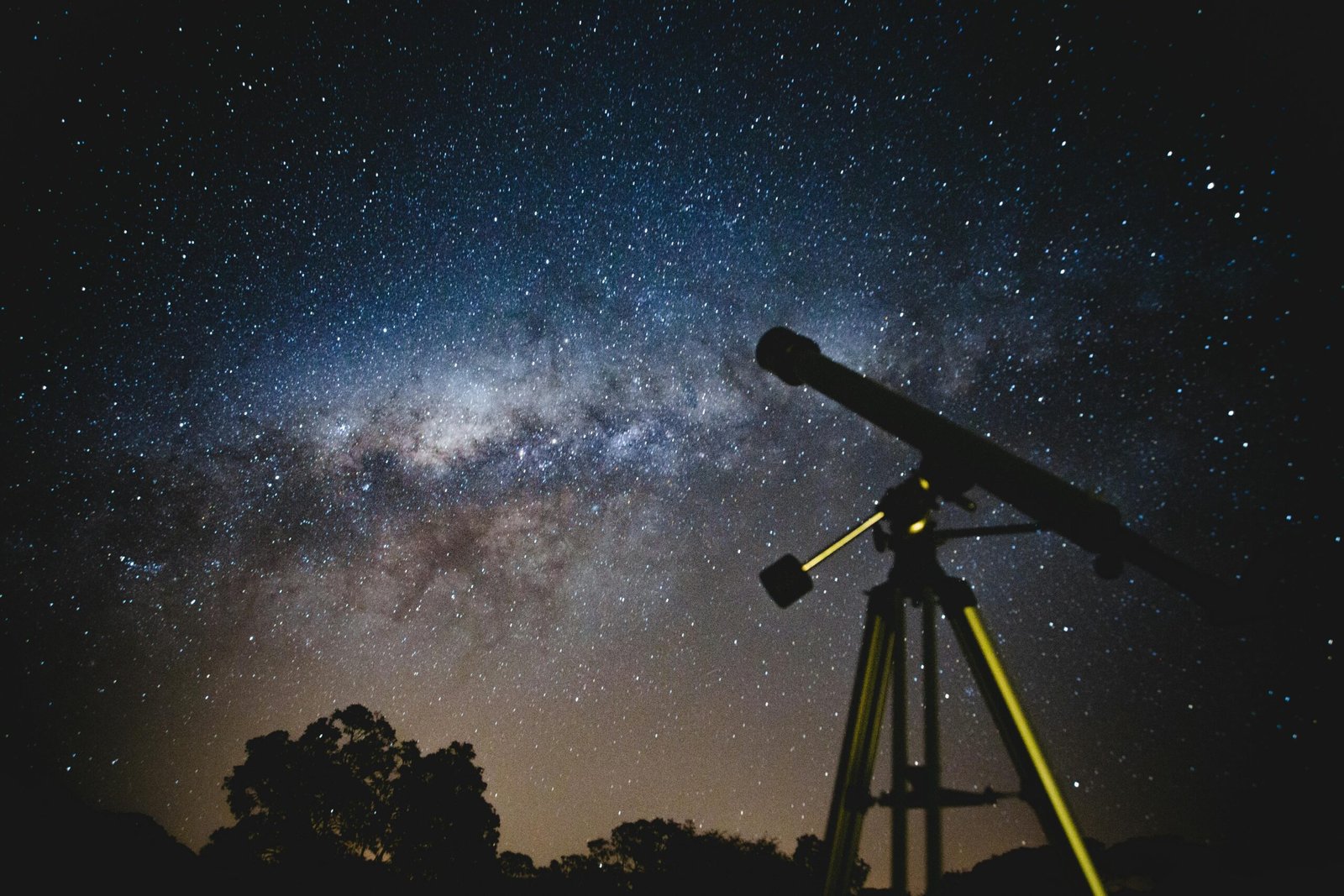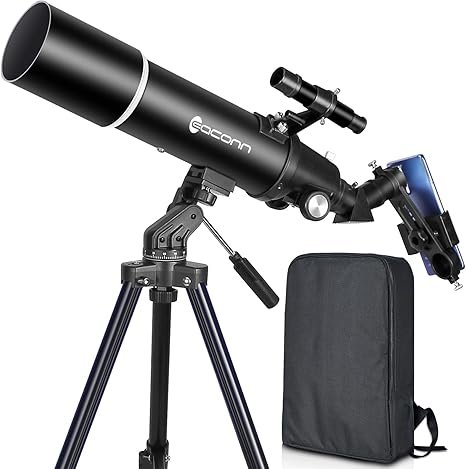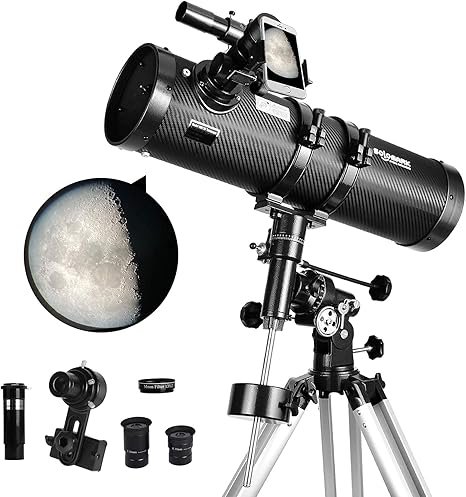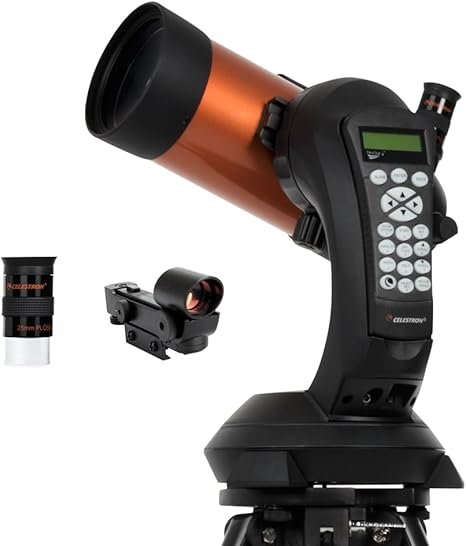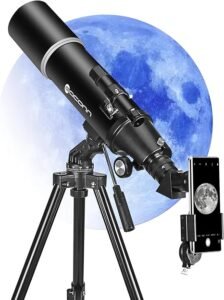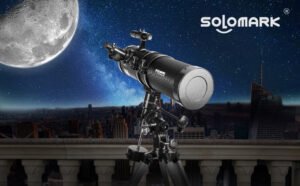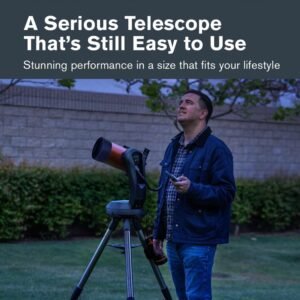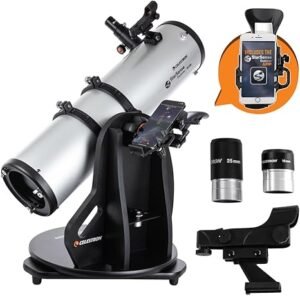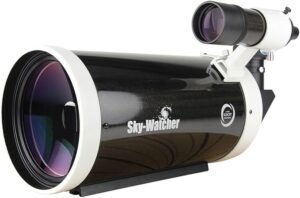Hi, I’m Joakim, and welcome to TopGadgetGuide.net. Looking up at the night sky is a humbling and awe-inspiring experience. A good telescope can transform those tiny points of light into detailed planets, distant galaxies, and breathtaking nebulae, right from your own backyard. But with terms like reflector, refractor, and aperture, choosing your first telescope on Amazon can seem incredibly complex. I’ve done the research to break down the 5 main types of telescopes to help you find the perfect instrument to begin your cosmic journey.
Comparison Table (Top 3 Picks)
Detailed Product Reviews
1. The Classic Refractor Telescope
- Description: This is the type of telescope most people picture: a long, thin tube with a large lens at the front. Refractors use lenses to gather and focus light, producing sharp, high-contrast images. They are fantastic for viewing bright objects within our solar system, like the Moon’s craters, the rings of Saturn, and the moons of Jupiter. They are also very low-maintenance.
- Pros:
- Very easy to use and requires almost no maintenance.
- Sealed tube protects optics from dust and moisture.
- Produces sharp, high-contrast images, perfect for planets and the Moon.
- Cons:
- Can be more expensive per inch of aperture compared to reflectors.
- Large refractors can be long and unwieldy.
- Why it’s on this list: It’s the best choice for a beginner who wants a simple, grab-and-go telescope for stunning views of the Moon and planets without any complicated setup.
2. The Newtonian Reflector Telescope
- Description: Invented by Isaac Newton, this telescope uses a large, curved mirror at the back of an open tube to gather light. Reflectors offer the most light-gathering power for your money, making them ideal for viewing faint, deep-sky objects like galaxies and nebulae. They provide bright, impressive views and are a favorite among amateur astronomers.
- Pros:
- The best performance and largest aperture for the lowest price.
- Excellent for viewing faint deep-sky objects like galaxies and nebulae.
- Shorter and more manageable than a refractor of a similar power.
- Cons:
- The open tube design means the mirrors may need occasional cleaning and alignment (collimation).
- The eyepiece is located on the side of the tube, which can take some getting used to.
- Why it’s on this list: It offers the biggest “wow” factor for your budget, allowing you to see far beyond our solar system into deep space.
3. The GoTo Computerized Telescope
- Description: A GoTo telescope is your personal automated tour guide of the universe. After a simple alignment process, a computerized mount with a built-in database of thousands of celestial objects can automatically point the telescope to any planet, star, or galaxy you select from its hand controller. It takes the frustration out of finding objects and lets you spend more time observing.
- Pros:
- Automatically finds and tracks thousands of objects in the night sky.
- Perfect for beginners who are unfamiliar with star charts and constellations.
- Makes your stargazing sessions incredibly efficient and rewarding.
- Cons:
- More expensive than non-computerized telescopes of the same size.
- Requires a power source (battery pack or AC adapter).
- You don’t learn the night sky in the same way as with a manual telescope.
- Why it’s on this list: It’s the ultimate choice for the modern astronomer who wants to see as much as possible without the steep learning curve of manual star-hopping.
4. The Tabletop / Dobsonian Telescope
- Description: This is a simple and brilliant design, essentially a reflector telescope on a lazy-susan-style base. This “point-and-look” simplicity, combined with a large aperture, makes tabletop Dobsonians incredibly popular. They are compact enough to place on a sturdy table or the hood of a car, offering powerful views in a portable package.
- Pros:
- Extremely easy to set up and use.
- A very stable and intuitive mount.
- Offers a large aperture (and great views) in a compact, portable form.
- Cons:
- Requires a sturdy, elevated surface like a table to be used comfortably.
- The manual movement is not ideal for astrophotography.
- Why it’s on this list: It’s the perfect blend of power and simplicity, offering breathtaking views in a compact, user-friendly, and affordable package.
5. The Catadioptric (Compound) Telescope
- Description: A Catadioptric telescope, like a Schmidt-Cassegrain or Maksutov-Cassegrain, is a hybrid design that uses both mirrors and lenses. This “folds” the light path, allowing for a very powerful telescope in an incredibly short and compact tube. They are the jacks-of-all-trades of the telescope world, excellent for both planetary and deep-sky viewing, as well as astrophotography.
- Pros:
- The most compact and portable design for its power.
- Excellent all-around optical performance.
- The best and most popular choice for serious astrophotography.
- Cons:
- The most expensive type of telescope.
- The complex design can be heavier than a reflector of the same aperture.
- Why it’s on this list: It is the premium, high-performance choice for the serious amateur astronomer who wants a versatile instrument for both visual observing and photography.
My Final Recommendation
For a beginner looking to get the most impressive views for their money and truly explore the heavens, my top recommendation is The Newtonian Reflector Telescope.
While a refractor is slightly easier to maintain, the sheer light-gathering power of a reflector opens up a whole new universe of possibilities. The moment you see the faint spiral arms of the Andromeda Galaxy or the glowing gas clouds of the Orion Nebula through a reflector, you’ll be hooked. It offers the best performance for your investment and a lifetime of cosmic exploration.

